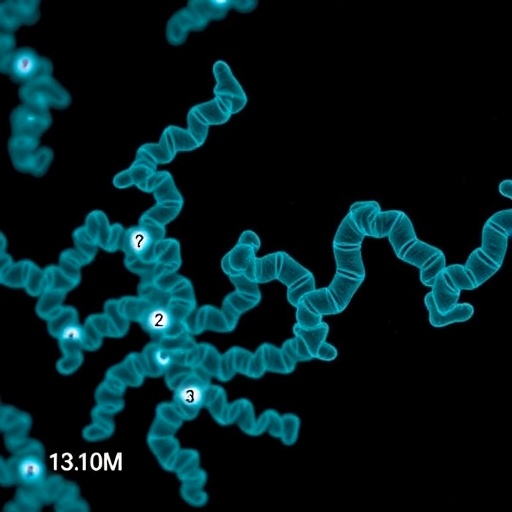Thioesterases (TEs), characterized by their α/β hydrolase fold, are pivotal enzymes in the intricate processes of polyketide and non-ribosomal peptide biosynthesis. The distinction between Type-I and Type-II thioesterases is essential, as Type-I TEs are integral to multi-modular enzymatic assembly lines, fundamentally shaping the molecular architectures of the compounds produced, while Type-II TEs operate independently, ensuring the fidelity of these processes through essential proofreading mechanisms. The influence of TEs extends far beyond these established roles, fueling a growing body of literature that reveals a plethora of non-canonical functions associated with these versatile enzymes.
Recent investigations into TEs have illuminated their potential impacts on the secondary metabolite landscape of bacterial producers. This renewed interest stems not only from a desire to understand the enzymatic precision required for biosynthetic assembly lines but also from an attempt to harness this knowledge for biotechnological applications. Polyketides, for instance, represent a complex family of natural products, with therapeutic potential in a variety of areas, including oncology and antimicrobial treatments. Investigating the underlying mechanisms of TEs could therefore unveil new pathways to optimize the production of these valuable compounds.
The multi-modular nature of some non-ribosomal peptide synthetases (NRPSs) inherently relies on the functionality of Type-I TEs to cleave acyl-thioester intermediates, ultimately dictating the overall conformation of the synthesized compounds. Importantly, these TEs do not simply act as termination enzymes; they possess an intricate role in fine-tuning the biosynthetic process, where precise timing and substrate specificity are crucial. Understanding how these enzymes interact with their cognate substrates can provide insights into the biosynthetic pathways that lead to complex natural products.
Examining the standalone Type-II TEs reveals a different layer of functional complexity. These autonomous enzymes play a critical role in safeguarding the integrity of the biosynthetic assembly lines. By removing mischarged or aberrant intermediates, they ensure that the pathway remains active and efficient. The proofreading action of Type-II TEs not only enhances the overall yield of metabolites but also prevents the accumulation of potentially toxic by-products that could arise from errors during synthesis. Distinct from the canonical roles ascribed to these enzymes, the advances in our understanding challenge traditional paradigms and suggest a more dynamic involvement in metabolic regulation.
Recent studies have unraveled non-canonical functions of TEs, providing compelling evidence that their roles extend beyond mere substrate manipulation. One fascinating discovery is their involvement in cellular stress responses. Under various stress conditions, such as nutrient limitation or antibiotic exposure, TEs can modulate metabolic flux, impacting the overall health and survival of bacterial populations. This adaptive capability highlights the evolutionary advantages offered by TEs, suggesting they could serve as crucial players in bacterial resilience against environmental fluctuations.
Additionally, novel interactions between TEs and cellular regulatory mechanisms have been observed. Recent findings indicate that TEs can influence gene expression linked to secondary metabolism, thereby acting at the genomic level. By impacting transcription factors or regulatory proteins associated with biosynthetic gene clusters, TEs significantly shape metabolic outputs. These multifaceted interactions emphasize that their roles are not confined to enzymatic activity, indicating a sophisticated layer of control that integrates biochemical pathways and regulatory networks.
Moreover, the advancements in structural biology and genomics have illuminated the multifarious architectures of TEs, revealing a surprising diversity within this enzyme family. These structural insights enable a deeper understanding of how TEs can achieve specificity for various substrates, which, in turn, has implications for engineering enzymes with tailored functionalities. By dissecting the structural determinants that dictate substrate recognition and reactivity, researchers can develop innovative strategies to reprogram TEs for synthetic biology applications, potentially leading to the creation of novel compounds.
The implications of these discoveries resonate far beyond the realm of fundamental biochemistry. The potential for harnessing TEs in synthetic biology and biomanufacturing is vast. By elucidating the non-canonical functions of TEs, researchers pave the way for innovative biotechnological applications. For instance, they may enable the design of engineered pathways for producing complex molecules that were previously difficult to synthesize through traditional means. This emerging field of research could lead to breakthroughs in drug discovery, agricultural applications, and the development of novel materials.
In conclusion, the study of thioesterases represents a vibrant and rapidly evolving field of research with profound implications for our understanding of bacterial secondary metabolism. The enhanced roles of Type-I and Type-II TEs, coupled with the uncovering of their non-canonical functions, open new avenues for exploration in both basic and applied sciences. As our knowledge of these enzymes continues to expand, the potential applications in biotechnology and medicine are only limited by our creativity in leveraging this information for practical use.
As researchers continue to peel back the layers of complexity surrounding thioesterases, the surge of interest is likely to yield additional surprising findings in the coming years. The promise they hold for revolutionizing the production of bioactive compounds and optimizing metabolic processes is just beginning to be realized. For scientists in the field, this represents an exciting opportunity to contribute to the next generation of discoveries that intertwine natural product biosynthesis, enzymology, and innovative biotechnological advancements.
Ultimately, the evolution of research surrounding non-canonical thioesterases encapsulates the dynamic nature of enzymology and metabolic regulation. As new findings emerge, they challenge existing concepts and encourage a re-evaluation of how we view these essential enzymes in the grand tapestry of microbial life. The journey into understanding TEs is far from over, and the future promises to unveil even more intricate relationships, functions, and applications in the biological world.
Subject of Research: Non-canonical thioesterases in bacterial non-ribosomal peptide biosynthesis
Article Title: Non-canonical thioesterases in bacterial non-ribosomal peptide biosynthesis
Article References: Matsuda, K. Non-canonical thioesterases in bacterial non-ribosomal peptide biosynthesis. J Antibiot 78, 639–650 (2025). https://doi.org/10.1038/s41429-025-00854-3
Image Credits: AI Generated
DOI: October 2025
Keywords: Thioesterases, α/β hydrolase, polyketide biosynthesis, non-ribosomal peptide biosynthesis, Type-I TEs, Type-II TEs, enzymatic assembly lines, metabolic regulation, secondary metabolites, gene expression, structural biology, synthetic biology.




